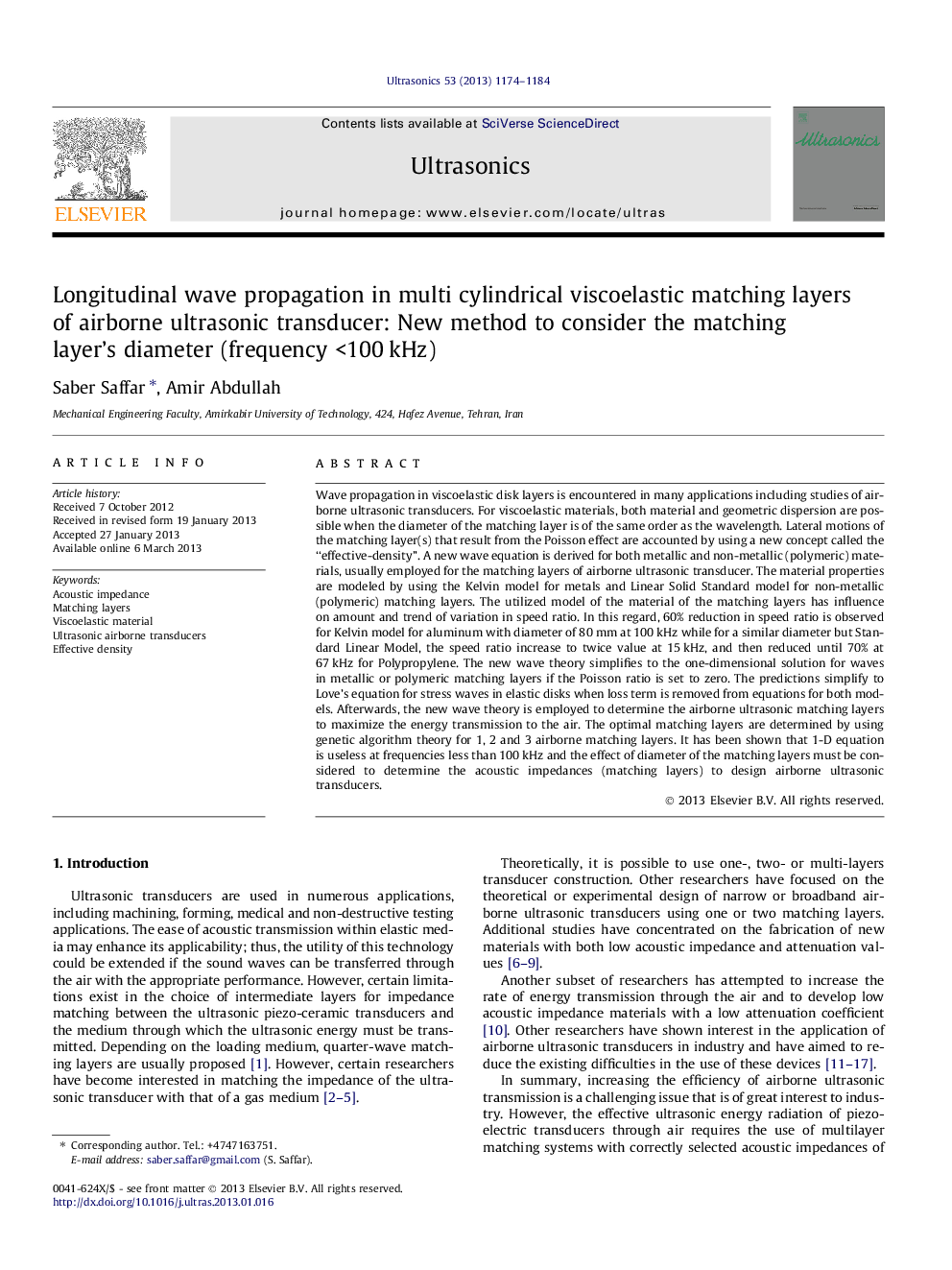| کد مقاله | کد نشریه | سال انتشار | مقاله انگلیسی | نسخه تمام متن |
|---|---|---|---|---|
| 1758926 | 1019256 | 2013 | 11 صفحه PDF | دانلود رایگان |

Wave propagation in viscoelastic disk layers is encountered in many applications including studies of airborne ultrasonic transducers. For viscoelastic materials, both material and geometric dispersion are possible when the diameter of the matching layer is of the same order as the wavelength. Lateral motions of the matching layer(s) that result from the Poisson effect are accounted by using a new concept called the “effective-density”. A new wave equation is derived for both metallic and non-metallic (polymeric) materials, usually employed for the matching layers of airborne ultrasonic transducer. The material properties are modeled by using the Kelvin model for metals and Linear Solid Standard model for non-metallic (polymeric) matching layers. The utilized model of the material of the matching layers has influence on amount and trend of variation in speed ratio. In this regard, 60% reduction in speed ratio is observed for Kelvin model for aluminum with diameter of 80 mm at 100 kHz while for a similar diameter but Standard Linear Model, the speed ratio increase to twice value at 15 kHz, and then reduced until 70% at 67 kHz for Polypropylene. The new wave theory simplifies to the one-dimensional solution for waves in metallic or polymeric matching layers if the Poisson ratio is set to zero. The predictions simplify to Love’s equation for stress waves in elastic disks when loss term is removed from equations for both models. Afterwards, the new wave theory is employed to determine the airborne ultrasonic matching layers to maximize the energy transmission to the air. The optimal matching layers are determined by using genetic algorithm theory for 1, 2 and 3 airborne matching layers. It has been shown that 1-D equation is useless at frequencies less than 100 kHz and the effect of diameter of the matching layers must be considered to determine the acoustic impedances (matching layers) to design airborne ultrasonic transducers.
► The new equation derived to considering the effect of lateral inertia for transmission energy.
► This new theory is employed to calculate the acoustic impedance of matching layers for airborne ultrasonic transducers.
► Diameter of the matching disk plays a key role in magnitude of acoustic impedance in frequency less than 100 kHz.
► One-dimensional equation is useless in low frequency range of ultrasonic (⩽100 kHz).
Journal: Ultrasonics - Volume 53, Issue 6, August 2013, Pages 1174–1184